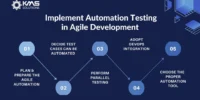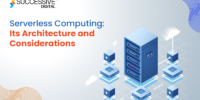The rise of edge computing has transformed the way data is processed and managed, pushing computational capabilities closer to where it’s needed. In this expedition into edge computing, we’ll explore quick tips for effective edge device management, ensuring optimal performance and reliability in distributed computing environments.
1. Comprehensive Inventory Management
Start your edge computing journey with a comprehensive inventory of all edge devices. Keep track of device specifications, locations, and functionalities. This inventory forms the foundation for efficient management and maintenance.
2. Implement Robust Security Measures
Security is paramount in edge computing. Implement robust security measures to safeguard edge devices and the data they process. This includes encryption, access controls, regular security audits, and firmware updates to address vulnerabilities.
3. Utilize Device Monitoring Solutions
Deploy device monitoring solutions to keep a close eye on the health and performance of edge devices. Monitoring tools enable real-time insights into device status, helping identify issues before they impact operations.
4. Remote Management Capabilities
Ensure that your edge devices have remote management capabilities. This allows administrators to troubleshoot, update, and configure devices without the need for physical access. Remote management enhances operational efficiency.
5. Implement Edge Device Lifecycle Management
Establish a robust lifecycle management strategy for edge devices. This includes provisioning, configuration, software updates, and eventual decommissioning. Proper lifecycle management ensures devices are always up-to-date and in optimal condition.
6. Edge Device Scalability Planning
Anticipate the scalability needs of your edge computing infrastructure. Plan for the addition of new edge devices and the increased workload. Scalability planning ensures that your edge computing solution can seamlessly grow with the demands of the environment.
7. Regular Data Backups
Implement regular data backups for edge devices. In distributed environments, data loss can be detrimental. Ensure that critical data processed at the edge is backed up securely, protecting against unforeseen events.
8. Edge-Focused Training for IT Personnel
Equip your IT personnel with the knowledge and skills needed for edge device management. Edge computing introduces unique challenges, and specialized training ensures that your team can effectively handle the intricacies of managing distributed devices.
9. Energy Efficiency Strategies
Consider the energy efficiency of edge devices, especially in remote or resource-constrained locations. Implement strategies to optimize energy usage, such as device sleep modes, intelligent scheduling, and the use of energy-efficient hardware. ⚡
10. Regular Audits and Compliance Checks
Conduct regular audits and compliance checks to ensure that edge devices adhere to regulatory standards and internal policies. Regular assessments help identify and rectify potential compliance issues.
Conclusion
Embarking on an edge computing expedition requires comprehensive inventory management, robust security measures, device monitoring solutions, remote management capabilities, lifecycle management, scalability planning, regular data backups, specialized training for IT personnel, energy efficiency strategies, and regular audits. By following these quick tips, you’ll navigate the complexities of edge device management, ensuring a smooth and efficient edge computing environment. Happy exploring!








